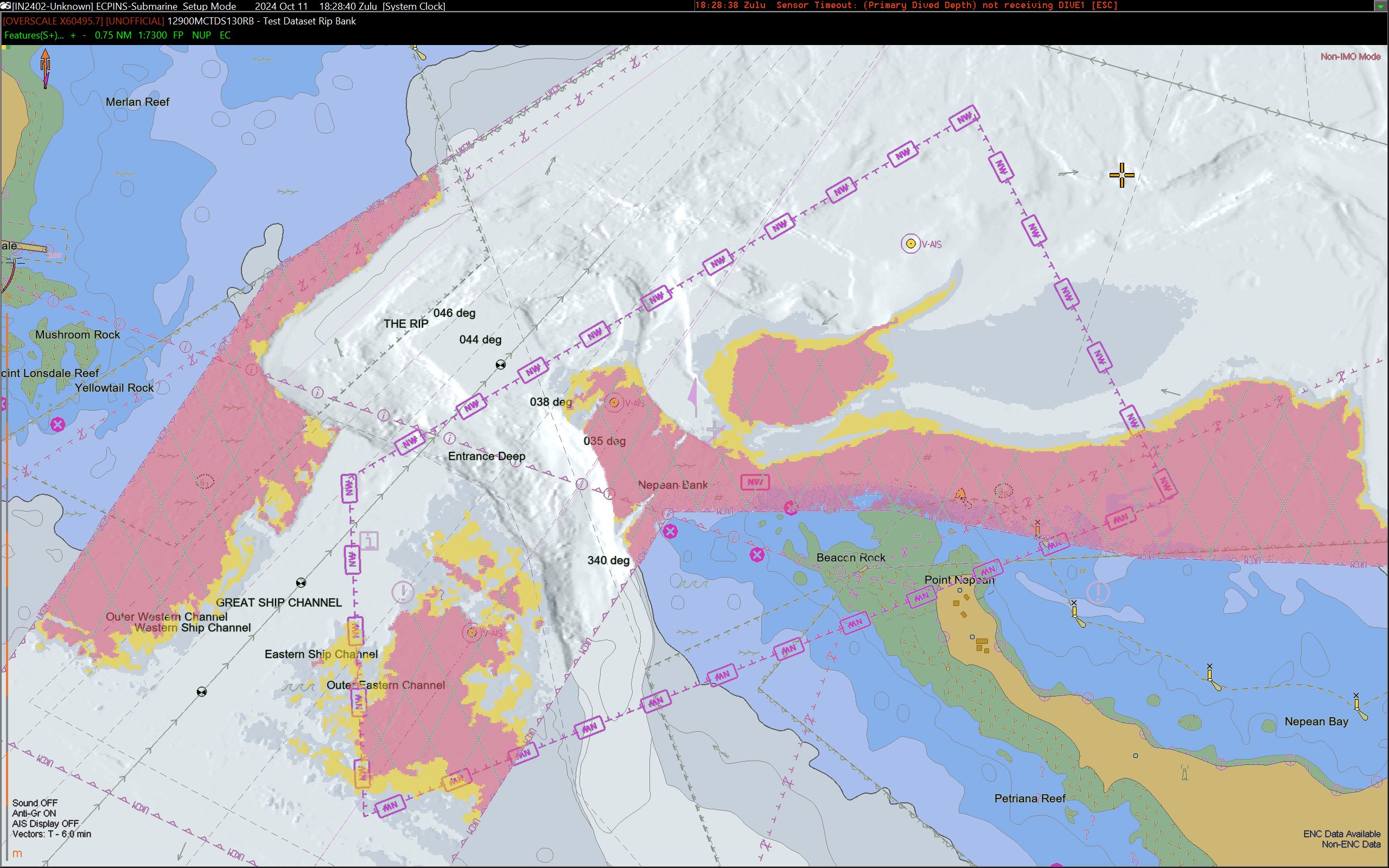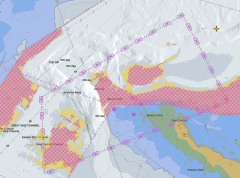Smart Navigation Moves Closer to Reality: Completion of Phase 1 of the S-100 Implementation
Date de publication: 13/08/2025 - 10:37With the operational release of standards S-124 Navigational Warnings and S-128 Catalogue of Nautical Products, Phase 1 of S-100 Standards implementation has now been completed, marking a major step in the modernisation of navigation.
These specifications can now be updated in near real-time, directly supporting the enhancement of navigational safety and facilitating on-board data management. Data services conforming to these standards are now ready for production and integration into navigation systems such as the S-100 ECDIS.

Image shows S-124 Navigational Warnings overlaying the S-101 Electronic Navigational Chart (ENC) and the S-102 Bathymetric Surface.
Image copyright: OSI Maritime Systems
“With the operational release of S-124 Navigational Warnings and S-128 Catalogue of Nautical Products, mariners will benefit from streamlined access to critical safety and product information. S-128 will assist both mariners and regulatory authorities alike by providing automated tracking of product and service currency, validity, and other pertinent information. S-124 will provide near real time access to navigational warnings which will be displayed on S-100 ECDIS for mariners at sea. Both S-124 and S-128 will help to support safety of life at sea while also improving operational efficiency."
-Dr. John Nyberg, IHO Director.
How Can S-124 Navigational Warnings and S-128 Catalogue of Nautical Products Improve Maritime Navigation?
- Streamlined access to information: Mariners will no longer need to consult multiple sources of information. Instead, their navigation systems will seamlessly consolidate, verify, and present all relevant inputs in real time - delivering a unified, accurate, and timely picture that enhances decision making and safety at sea.
- Improved safety and efficiency: Near real-time updates mean that vessels will be aware of what is happening in their surroundings as soon as data is made available by the data producer, allowing for faster and more accurate decision-making, which helps reduce risks and delays.
- Support for regulatory oversight: The automated tracking of product updates will simplify regulatory compliance checks and, in doing so, make maritime operations more efficient.
S-124 Navigational Warnings and S-128 Catalogue of Nautical Products in Action: What Mariners Can Expect
Traditionally, navigational warnings have been broadcast to vessels at sea via radio systems. With the introduction of S-124 Navigational Warnings, these alerts can now be directly integrated into the chart display on vessels equipped with S-100 ECDIS, providing all essential information related to navigational safety within a single, integrated navigation system.
Furthermore, the S-128 Catalogue of Nautical Products plays a crucial role in incoming data management. It allows systems to automatically track the status of subscribed navigational data services, indicating which are up-to-date, available, or missing. This functionality improves the overall efficiency of data distribution and management and supports regulatory authorities during inspections by identifying which products and services are current.
“Now that the IHO has approved all S-100 phase 1 standards, mariners can take advantage of the next generation of navigation systems. The utilisation of the new S-100 products not only enhances safety but also provides opportunities to optimise loading of cargo and plan more efficient routes, which is both cost-effective and environmentally friendly. S-100 is also a more cyber-secure solution than current navigation systems and gives opportunities for more automated navigation.”
– Magnus Wallhagen, Chair of the HSSC.
Beyond Navigation: The Global Reach of S-100
The full implementation of the S-100 standardisation framework will bring broader benefits that go beyond navigation. Enhanced efficiency, a key expected outcome of S-100 in maritime navigation, can not only help reduce operational costs, but also supports decreased fuel consumption and emissions. As shipping becomes more efficient, lower fuel consumption and faster delivery times can potentially lower the cost of goods such as food, electronics, and other key commodities, ultimately benefiting the global community.
The completion of Phase 1 of the S-100 implementation demonstrates the international hydrographic community’s commitment to fulfilling the goals set out in the IHO Roadmap for the S-100 Implementation Decade (2020–2030).
The IHO’s continued leadership in data distribution and standardisation is paving the way toward full digital navigation. We extend our sincere thanks to the entire IHO community, in particular the IHO Member States and subject matter experts who actively contributed to achieving this milestone.




Share this page: